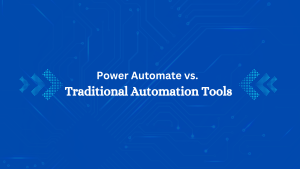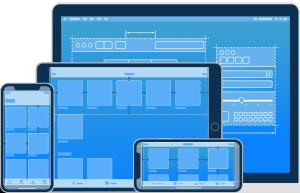
People Management and Manpower Allocation App.
In the rapidly evolving world of manufacturing and production, maximizing plant productivity is essential. People management and manpower allocation frequently center upon balancing workload and skills, maintaining employees motivated and engaged, and dealing with conflicts and communication challenges. Managers can struggle to effectively evaluate their team members, talents, and potential, resulting in mismatched assignments and insufficiently utilised talent.
One of the innovative ways to achieve this is by leveraging Microsoft Power Apps to enhance people management and man allocation. By optimizing these procedures, businesses may save 3-6 hours of plant production everyday, resulting in considerable cost savings and operational efficiency.
Let’s take a look at the pain areas in manpower allocation.
->Manual Scheduling: Production schedules were often created manually, relying on spreadsheets or paper-based systems. This process was time-consuming and prone to errors.
->Static Inventory Management: Inventory levels were often maintained based on fixed reorder points rather than dynamic demand forecasting, leading to either stock outs or overstock situations.
->Centralized Decision-Making: Decisions regarding resource allocation, such as material procurement or workforce deployment, were centralized and often complicated, resulting in delays.
Excessive Waste of time & rework:
->Inefficient Workflow Layouts: Factories often had inefficient layouts that involve excessive movement of materials and personnel, increasing cycle times and operational costs.
->Limited Automation: Tasks that could be automated, such as repetitive assembly, were often performed manually, slowing down process and reducing overall efficiency.
->Paper-Based Documentation: Record-keeping and documentation were primarily paper-based, making it challenging to retrieve information quickly and accurately when needed.
What are Power Apps?
Microsoft Power Apps is a suite of apps, services, connectors, and a data platform that provides a rapid application development environment to build custom apps for your business needs. Using Power Apps, you can quickly build custom business apps that connect to your data stored either in the underlying data platform (Microsoft Data verse) or in various online and on-premises data sources.
Building the App: A Step-by-Step Approach:
- Developing a Power App for People Management and Manpower Allocation involves several strategic phases. First and foremost, the app must have a user-friendly interface that allows plant managers to simply input and view data. This may be accomplished by integrating a data source, such as Excel, Biometric scanner system or attendance list that contains information on staff scheduling, machine availability, and production activities.
- Next, use Power Apps’ drag-and-drop interface to construct multiple forms and displays. For example, a manager may easily allocate staff to certain machines based on their skill level and availability. The software may have dropdown menus for choosing people and machines, checkboxes for shift availability, and automatic notifications to advise managers of scheduling issues or machine downtime.
- Furthermore, Power Automate can be integrated to streamline workflows. For instance, when a new job order is received, the app can automatically allocate the necessary resources and send notifications to relevant team members. This reduces the need for manual intervention and ensures that tasks are assigned promptly and efficiently.
Key Features:
- Employee Directory:
- Functionality: Maintain a comprehensive database of employees including their skills, availability, and current assignments.
- Power App Components: Galleries to display employee lists, forms for adding or updating employee information.
- Machine Inventory:
- Functionality: Keep track of all machines, their status, maintenance schedules, and assignment history.
- Power App Components: Galleries for machine lists, forms for adding or updating machine details.
- Task Assignment:
- Functionality: Assign employees to specific machines or tasks based on their skills and availability.
- Power App Components: Dropdowns or combo boxes for selecting employees and machines, forms for creating new assignments.
- Scheduling and Availability:
- Functionality: Manage and visualize the schedules of employees and machines to avoid conflicts and ensure optimal utilization.
- Power App Components: Calendars or timeline views, filters to view availability by date, employee, or machine.
- Notifications and Alerts:
- Functionality: Send notifications to manager about their employee’s assignments, shift changes, or machine issues. Instantly update machine status and personnel allocation, ensuring that the right people are assigned to the right tasks without delay, if issue arises push notification is triggered and allows shop floor supervisor to raise ticket to solve the issue.
- Power App Components: Automated flows using Power Automate to trigger notifications via email or push notifications.
- Reporting and Analytics:
- Functionality: Generate reports on people allocation. Where which person is allocated or find out which person is not on duty.
- Power App Components: Integration with Power BI for detailed analytics, in-app charts, and texts.
- User Roles and Permissions:
- Functionality: Define different roles (e.g., Manager, Supervisor, and Operator) and control access to various features based on these roles.
- Power App Components: Role-based access controls, conditional visibility of components.
Let’s Dive Dipper in App Solutions:
- Gathering Data on Workforce Trends:
Many companies are increasingly relying on contractual employees due to the challenges associated with maintaining full-time employees. This trend can be effectively monitored and managed through Power Apps by:
- Creating a Centralized Database: App can collect and store data on workforce composition, including the number of contractual versus full-time employees.
- Data Analytics Integration: Integrate Power BI with Power Apps to analyse trends and make informed decisions about workforce management.
- Automated Surveys and Feedback: App can conduct regular surveys and gather feedback from both full-time and contractual employees, aiding in understanding their needs and preferences.
- Resource Allocation at the Right Time and Place:
Ensuring that the right resources are available at the right time and place is crucial for operational efficiency. Power App can facilitate this by:
- Dynamic Scheduling: This app allows managers to allocate employees to different tasks and machines based on real-time availability and skill sets.
- Automated Notifications: Implement automated notifications to alert employees and managers of schedule changes, ensuring timely communication.
- Geo-location Services: Use of geo-location features to assign tasks and machines based on the physical location of employees, optimizing time and resource utilization.
- Monitoring and Updating Employee Requirements:
Having the right number of employees in each sector is essential for maintaining productivity. Power App can help monitor and update these requirements by:
- Real-time Dashboards: Dashboards that display the current number of employees in each sector, highlighting areas with shortages or surpluses.
- Automated Alerts: Set up alerts to notify managers when employee numbers fall below or exceed certain thresholds in specific sectors.
- Task and Workload Management: Use task management features to redistribute work and resources dynamically, ensuring balanced workloads across all sectors.
- Updating the Daily Employee Count:
Accurate and timely updates of the employee count are vital for efficient management. Power Apps can streamline this process through:
- Employee Check-in/Check-out System: App can help in keeping the track of check-in/check-out system that employees use to log their attendance, automatically updating the employee count in real-time.
- Integration with HRM Systems: App can be integrated with existing HR management systems to ensure seamless data flow and accurate record-keeping.
- Daily Reports: Generate daily reports summarizing employee attendance and availability, which can be shared with relevant shop floor manager before starting of the work on daily basis for informed decision-making.
Saving Money and Enhancing Productivity:
Implementing a Power App for people management and manpower allocation can result in substantial cost savings. By reducing the time spent on manual scheduling and allocation tasks, plant managers can focus on more strategic activities. The automation of routine tasks eliminates errors and minimizes downtime, which can significantly boost productivity.
For example, if a plant operates for 8 hours a day and saves 3-6 hours through efficient resource allocation, this means a potential increase in productive hours by up to 75%. This boost in productivity can lead to higher output and, consequently, increased revenue. Additionally, optimizing machine usage reduces wear and tear, leading to lower maintenance costs and longer equipment lifespan.
->Instant Updates: Supervisors can instantly update machine status and personnel allocation, ensuring that the right people are assigned to the right tasks without delay.
->Centralized Information: All data is centralized in a single application, reducing the time spent searching for information across different systems.
->Shift Management: Automate shift scheduling to ensure optimal coverage and avoid overstaffing or understaffing, which improves productivity.
One of the significant advantages of using Power Apps for People Management & Manpower Allocation is its cost-effectiveness. Developing applications using Power Apps is significantly cheaper compared to traditional app development for Android and iOS. Power Apps allows manufacturers to design customized applications without requiring extensive coding experience or a big development team. This low-code platform eliminates the need for a large initial investment, making it affordable for businesses of all sizes.
Conclusion:
In conclusion, developing a Power App for People Management and Manpower Allocation is a wise investment for any production facility. It not only increases productivity and saves time, but it also reduces costs and improves overall operational performance. Companies may remain competitive and meet productivity targets by embracing the potential of automation and real-time data.
If you have any questions regarding Power Apps or want to learn more about Microsoft Power Platform services, please do not hesitate to contact us; we would be happy to assist!







No comment yet, add your voice below!